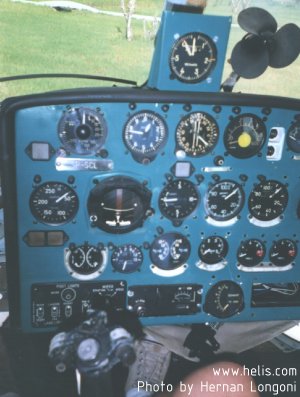The Mi-2, NATO code name 'Hoplite', was developed in the early 1960's by the
Mil bureau as a turbine-powered version of the Mi-1 Hare.
The recently development of the shaft-turbine engine revolutionized the design of the helicopter.
The twin turbines develop 40% more power than the Mi-1's piston engine for barely half
the dry weight, more than doubling the payload.
The fuselage of the Mi-2 greatly differs from that of the Mi-1,
carrying the engines above the cabin but the overall dimensions of the two
models remain closely similar.
The Mi-2 was flown in 1962, but never put into production in the Soviet Union. Instead responsibility for the type was assigned to WSK-Swidnik (now PZL) to Poland as part of a eastern europe Comecon rationalization programme, becoming the only Soviet-designed helicopter to be built solely outside the Soviet Union. Production in Poland started in 1965 and in by 1990s, PZL factory introduces a new variant: the W-3.
The Mi-2 was flown in 1962, but never put into production in the Soviet Union. Instead responsibility for the type was assigned to WSK-Swidnik (now PZL) to Poland as part of a eastern europe Comecon rationalization programme, becoming the only Soviet-designed helicopter to be built solely outside the Soviet Union. Production in Poland started in 1965 and in by 1990s, PZL factory introduces a new variant: the W-3.
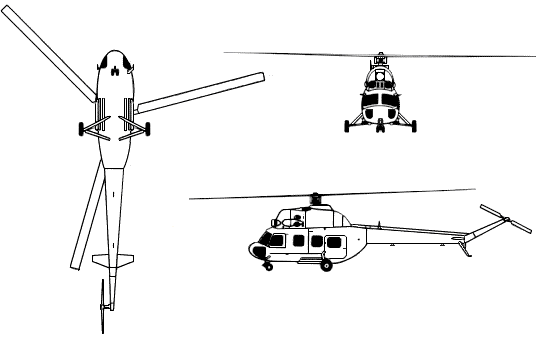
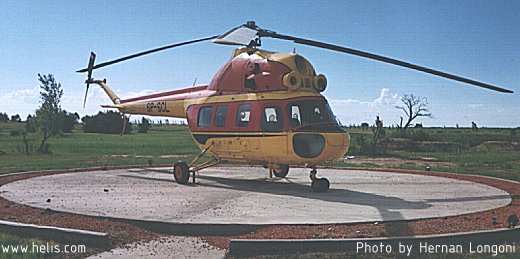
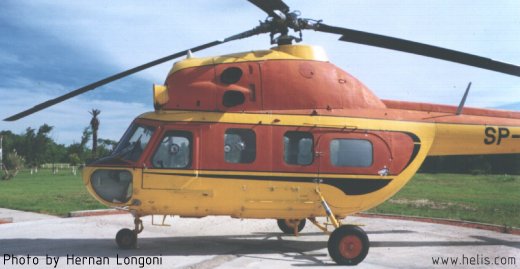
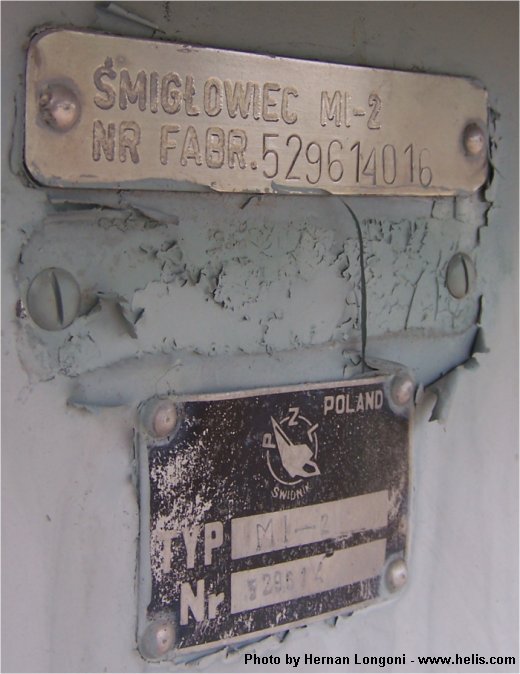
Specifications
8 passenger utility helicopter Rotor diameter: 14.56 mLength: 12 m
Height: 3.75 m
Disc area: 160 m2
Weights: empty: 2370 kgs, Max: 3700 Kgs, slung load: 800 kgs.
Engine: 2 Isotov GTD-350 of 431 shp
Speed: Max: 210 km/h
Range: 340 km
Service Ceiling: 4000 m
